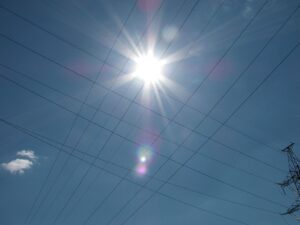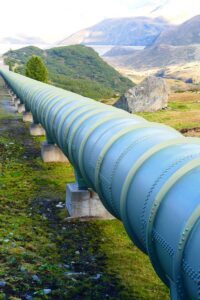 Fiber-optic distributed acoustic sensing or DAS is a highly effective technique that allows monitoring highways, railroads, and pipelines. Moreover, today it is possible to provide lower-cost communications network surveillance and management due to DAS ability of constant gapless monitoring.
Fiber-optic distributed acoustic sensing or DAS is a highly effective technique that allows monitoring highways, railroads, and pipelines. Moreover, today it is possible to provide lower-cost communications network surveillance and management due to DAS ability of constant gapless monitoring.
The thing is that the world economy requires a reliable global network of highways, railroads, and pipelines for the transportation of people, products, and resources across countries and continents. Also, fiber-optic communication cables including spare optical fiber are often used for their continuous, gapless monitoring.
Distributed acoustic sensing is a fiber-optic sensing technology that is quite “young”, about ten years ago. Since then, the technology is used not only in the laboratory but outside in several real-world applications.
The first main application of DAS is a new type of fiber optic security sensor for early detection of intruders. Then, distributed acoustic sensing became used in the oil and gas industry for the following aims:
- control of the effectiveness of hydraulic fracturing;
- production flow control;
- control of borehole seismic activity.
The unique ability of the DAS system to control quite long fibers that are already in place allows using distributed acoustic sensing for pipeline monitoring that is the today main field of DAS application as well as control of highways and railroads located next to optical fiber routes.
It should be mentioned that all these applications use the same key platform technology. The principle of DAS operation is based on signals that can be analyzed in real-time for detection, location, and classification of events. Then the obtained information that can be in different formats is transmitted to an operator.
Herewith, all distributed acoustic sensing systems use a technique called coherent optical time-domain reflectometry (C-OTDR) that is highly efficient for all fields of application. Now it is possible to detect different anomalies such as falling rocks along the tracks by the DAS system.
Nevertheless, DAS has the biggest influence in the signaling area, for example, distributed sensing helps to manage trains by control of their accurate position and motion in real-time. The technology enables to reduce journey times while increasing rail capacity and improving safety.
Of course, the distributed acoustic sensing system continues improving and the improvement will provide quantitative measurement with improved sensitivity and higher spatial resolution on longer lengths of the sensing fiber in the future.
Optromix is a DAS system manufacturer that provides top of the line distributed acoustic sensing systems suitable for monitoring of commerce networks. If you have any questions or would like to buy a DAS system, please contact us at info@optromix.com



 Distributed Acoustic Sensing (DAS)
Distributed Acoustic Sensing (DAS) Fiber optic products are progressively being deployed in many upstream and midstream applications. Nowadays fiber optic equipment is regularly used to provide high bandwidth telecommunications and infrastructure for SCADA (Supervisory Control and Data Acquisition) and is being used more and more to sense pressure, temperature, and strain along buried onshore and subsea pipelines and downhole. Pipeline leakage and intrusion detection continue to be a difficult issue because existing leak detection methods and the traditional methods of guarding pipelines have proven inadequate in the prevention of leaks and deferring third-party intrusion into pipelines and plant facilities.
Fiber optic products are progressively being deployed in many upstream and midstream applications. Nowadays fiber optic equipment is regularly used to provide high bandwidth telecommunications and infrastructure for SCADA (Supervisory Control and Data Acquisition) and is being used more and more to sense pressure, temperature, and strain along buried onshore and subsea pipelines and downhole. Pipeline leakage and intrusion detection continue to be a difficult issue because existing leak detection methods and the traditional methods of guarding pipelines have proven inadequate in the prevention of leaks and deferring third-party intrusion into pipelines and plant facilities. Distributed Acoustic Sensing (DAS)
Distributed Acoustic Sensing (DAS)